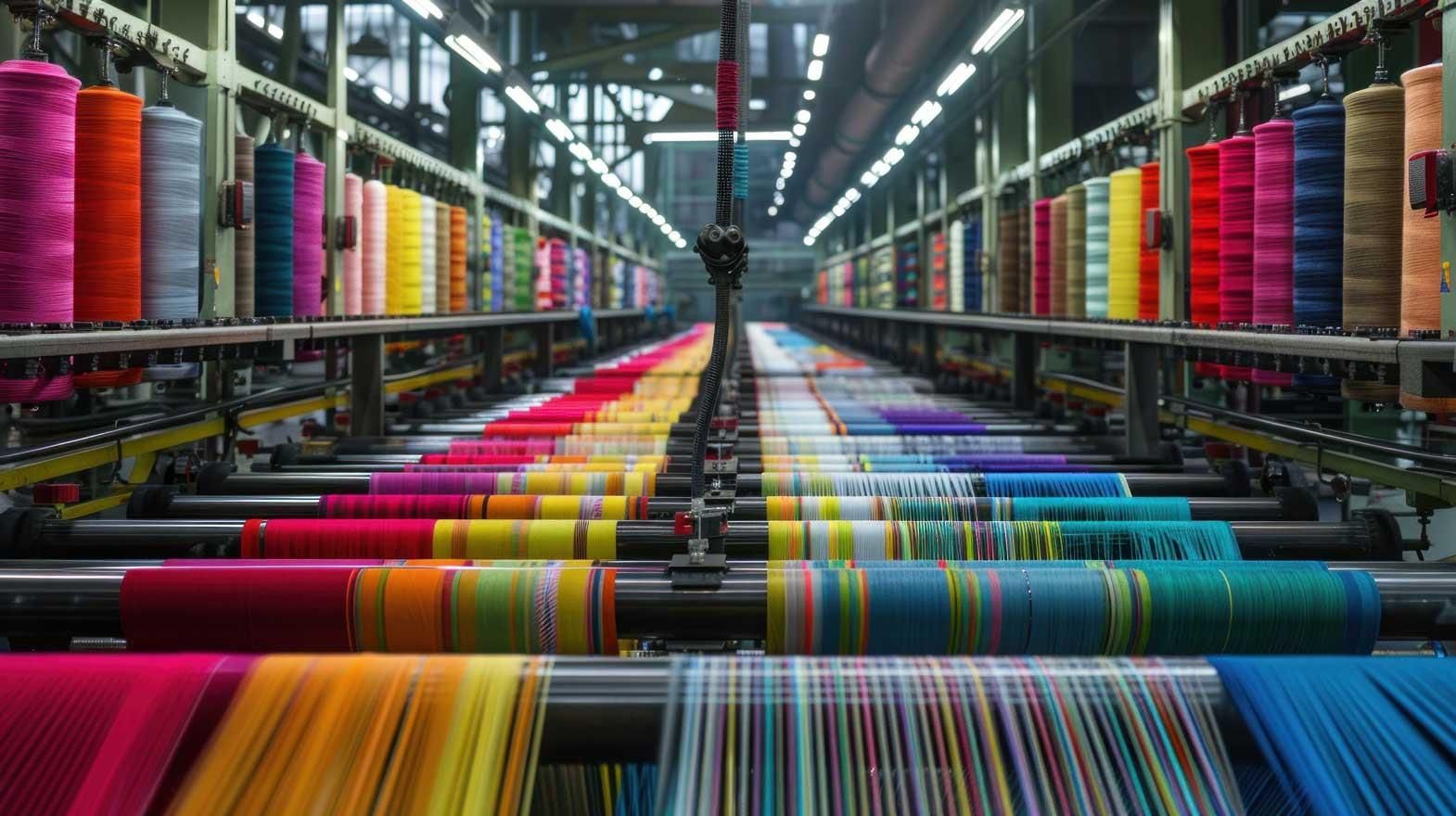Modern textile processing machinery incorporates technical features achieved through automation and electronic control systems. The utilization of digital control systems in textile processing machines offers several advantages:
Increased Quality and Productivity: Digital control systems enhance the quality and productivity of the processing materials. They enable precise control over various process parameters, leading to improved product consistency.
Enhanced Process Control: Digital control systems effectively manage critical process parameters, reducing the likelihood of machine breakdowns and interruptions in production.
For example, PLC (Programmable Logic Controller) programming is applied in processing machinery, with each controller linked to specific parameters.
For instance, if the dye solution level in the dye padder's trough decreases, it is detected by a pressure transducer. This transducer then activates the dosing pump for the dye liquor, maintaining the dye level and minimizing the risk of color variation in the batch. This ensures continuous production.
Various digital controllers are employed in textile machinery, including:
- Solenoid valves
- Load cells
- Thermocouples
- Pressure/capacitive transducers
- Flame detectors/photo cells
- Moisture measuring devices
- Electrodes
- Optical density measuring devices
- Strain gauges
- Baume measuring devices
The functioning of processing controllers through PLC programming involves the following steps:
Sensing Parameters: Sensors, such as pressure transducers, thermocouples, load cells, and others, collect data on various process parameters.
Data Processing: The collected data is processed by the PLC, which uses programmed logic to make decisions based on the input.
Control Actions: The PLC sends control signals to various components, such as dosing pumps or solenoid valves, to maintain or adjust the required process parameters.
Continuous Monitoring: The system continuously monitors the process and adjusts as needed to ensure consistency and quality.
In summary, the application of electronic process controllers in textile machinery, facilitated by PLC programming and automation, plays a pivotal role in maintaining product quality, increasing productivity, and ensuring the efficient operation of textile processing equipment.
- The passage of fabric over
tensioning roller which is having attached load cell it measure tension over a
fabric and changes the frequency of drive of pulling roller.
- Thermocouple installed in drying
unit, singeing unit measure processing temperature if it is having more
tolerance with set point temperature; it changes the percentage exhaustion to
maintain it.
- Pressure transducers installed
in washing unit which measure water level and cause the activation of feed pump
to achieve water level up to required height.
- The yarn clearer in modern
spinning machine of speed frame and ring frame used to identify irregularity in
the yarn. It is nothing but LVDT linear variable differential transformer.
According to changes in the inductance it changes the parameter of drafting
system or twisting property.
- The mercerization is effective when there is a continuous supply of fixed concentration of caustic, it is calculated by using baume measuring device. It calculates the density of caustic liquor according to its measurement it changes the washing parameter or charges the feeding of caustic.
- The photocells used in weft straightener used for the measuring skew and bowing effect throughout the width of fabric and to get it per the set point the driving angle of expander charges to reduce this effect also it getting used in the synchronization of speed in between printing station & drying unit.
- The feeding device which consist of plunger which sense throughout width of fabric to adjust the stenter frame so that it becomes easy for delivering the fabric with tension.
The digital electronic system having fundamental relation with each process but the efficient working of this controller are also important therefore it is required to take preventive majors during the period of maintenance of textile machineries to continue the production ability of textile industry.
Most of the textile manufacturing industries like benninger, kuster, monforts have inbuilt the electronically controlling system in machineries due to which the minimum breakdown in machineries & high productivity is possible. The kuster have developed the online washing system to adjust another matching within short period. Along with the textile machineries the controlling system are also used in plant accessories like boiler, thermopac & ETP plant.
The maintenance of these digital electronic controllers is also important for their efficient working, otherwise the process defect observed.
This article was originally published in the Textile Review magazine, December, 2012 issue, published by Saket Projects Limited, Ahmedabad.
About the Author:
Banti Bhalerao, Rahul Oza, Hanish Bhoir and Kiran Kambli are associated with the D.K.T.E. Textile and Engineering Institute of Ichalkaranji, Kolhapur

20240830145908.gif)







Comments